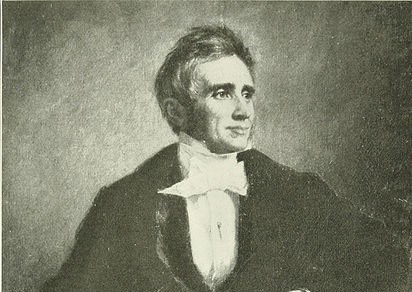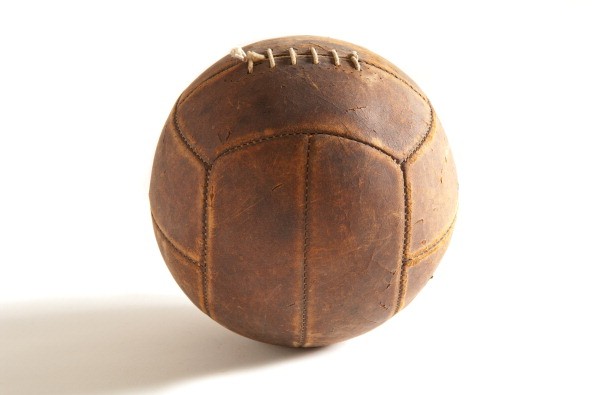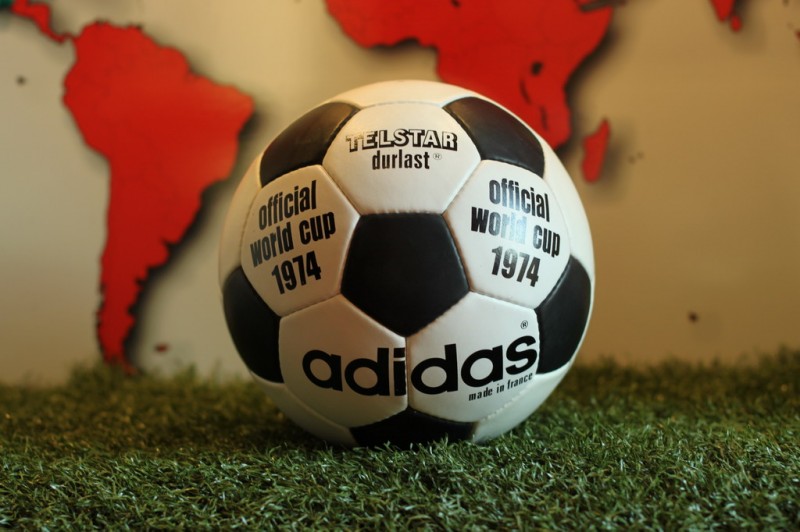Evolution of ball used in Football
From pig's bladder and leather-cased balls to the modern-day
Buckminster footballs, the ball used in Football has come through a long and arduous road to what it is in present day.
The advanced adjustment of football came just considerably
later, before recorded references propose that the early civilisations, for
example, the Chinese, Egyptians, Romans and in addition the South Americans
played with a round molded ball made out of human heads, sewed material,
creature bladder and skulls.
In the medieval age, these bladders were secured with
cowhide to give better shape and maintenance to the ball.
Charles Goodyear

Image Source: Google Images
The same guy whose name is used to name the famous brand of tyres; "GoodYear Tyres".
Charles Goodyear protected vulcanized elastic in 1836 and
made the main elastic football bladder in 1855. Before that, pig's bladders
were utilized as a part of footballs and their shape and size confirmed that of
the football too, which implied uneven ricochet and erratic conduct of the
ball.
The nineteenth century saw broad utilization of pig and cow
bladders in footballs secured with calfskin, it was just in the twentieth
century that the utilization of vulcanized elastic in bladders ended up normal.
Determination of size and weight of the football

Image Source: Google Images
The English Football Association (FA) was formed in 1863,
yet it was just nine years after the fact that a set portrayal was given for
the size and weight of the football. In 1872, it was expressed that the ball must be circular
with an external packaging estimating at least 27 inches and most extreme 28
creeps in outline, and the weight can be at least 13 pounds or a greatest of 15
pounds. Be that as it may, the heaviness of the ball was changed in 1937 to at
least 14 pounds and a most extreme of 16.
In spite of the fact that in the previous 150 years
the weight and size of the ball have stayed pretty much the same, what has
changed is the material utilized as a part of assembling a ball and the state
of the boards that make a ball.
Early 1900's

Image Source: Google Images
The bladder of the balls was presently to a great extent
made of vulcanized elastic, which could withstand its shape for a more extended
span of play and overwhelming weight as well.
The external packaging of the balls was made utilizing 18
pieces of cowhide, sewed together utilizing hemp and trim into six boards of
three segments each. These balls were bound up in the wake of embeddings the
bladder and expanding it and must be re-swelled a few times amid an amusement
to keep up its self-restraint.
The material of the ball made it a considerable measure
heavier particularly amid downpours, bringing about wounds to players while
heading amid an amusement. These balls likewise corrupted amid a match on
occasion and certain balls contrasted in their conduct from other because of
the calfskin being utilized.
Improvements after WWII
Given the inconsistencies in the past football outlines,
advance improvements were all together.
In the first place material pieces were included between the
bladder and calfskin packaging to give the ball that additional pad, making it
less demanding to control. Cowhide was covered with manufactured and other
non-permeable materials, to give waterproofing and a littler and more effective
valve was presented, which helped the termination of bound balls.
In the 1950s, white and orange balls were allowed to be
utilized alongside the typical darker shaded calfskin balls in floodlights and
snow, separately
Image Source: Google Images
The Buckminster Football Design
The Buckminster Ball idea was the brainchild of one American
designer Richard Buckminster Fuller. He got this thought while looking into on
approaches to develop structures utilizing least materials.
Basically, a Buckminster ball comprises of 20 hexagonal and
12 pentagonal patches. This is a similar white and debase which huge numbers of
us have seen all through our adolescence.
The primary engineered ball was created just in the 1960s
however then calfskin ball were considered to have a superior skip and control.
With the progression in innovation, the phone structure of calfskin ball was
imitated artificially to give the ball an indistinguishable sort of conduct
from its cowhide partners, prompting their entire substitution by the more up
to date footballs in the 1980s.
The primary authority football of the FIFA World Glass was
the Adidas Telstar in 1970, which depended on the Buckminster outline.

Image Source: Google Images
Modern Era Football
Most footballs in the cutting edge depend on the 32-board
Buckminster outline with minor varieties. Less boards like the beforehand
utilized 18-board configuration were less steady than the 32-board ones and had
more bend.
The 32 hexagons and pentagons, when sewn together, frame a
relatively consummate circle and because of its ergonomics and solidness it's
presently broadly utilized.
Numerous new outlines see the light of the day consistently
with the goal of making a speedier, more precise ball with a solid form and a
delicate vibe. The huge games organizations behind these outlines are
endeavoring to additionally enhance a fundamental protest of the game that has
been idealized over the previous century, and it doesn't resemble the they will
stop at any point in the near future.



No comments:
Post a Comment